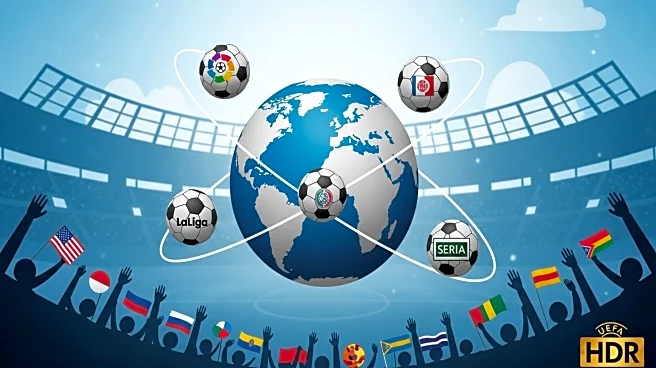What's Happening?
Spanish football clubs, including Real Madrid, Barcelona, and Atletico, have been consistent participants in the Champions League, while Sevilla has excelled in the Europa League. Despite their competitive performance, La Liga clubs are facing financial challenges compared to their Premier League counterparts. The financial gap has widened, with La Liga's revenue sources, primarily broadcasting and player transfers, being affected by piracy and a cooling transfer market. The introduction of collective TV rights in 2015 initially boosted income, but future TV revenue is expected to stagnate. Additionally, the revamped Champions League could further impact La Liga's financial standing.
Why It's Important?
The financial disparity between La Liga and the Premier League has significant implications for Spanish football. While La Liga clubs have implemented economic control measures to stabilize finances, the rigidity of these rules has led to underfunding in women's teams and smaller sporting sections. The financial challenges could affect the league's ability to attract and retain top talent, impacting its competitive edge in European competitions. The situation highlights the need for La Liga to adapt its financial model to ensure long-term sustainability and competitiveness.
What's Next?
La Liga may need to explore new revenue streams and adjust its financial regulations to balance financial discipline with inclusivity. The league's ability to address piracy and adapt to changes in the Champions League format will be crucial in maintaining its financial health. Stakeholders, including club owners and league officials, will likely engage in discussions to find solutions that support both men's and women's teams while ensuring the league's competitiveness on the international stage.
Beyond the Headlines
The financial challenges faced by La Liga clubs also raise questions about the broader economic model of European football. The reliance on broadcasting and transfer revenues may not be sustainable in the long term, prompting a reevaluation of how football leagues generate and distribute income. The situation underscores the importance of financial innovation and strategic planning in maintaining the health of football leagues.












